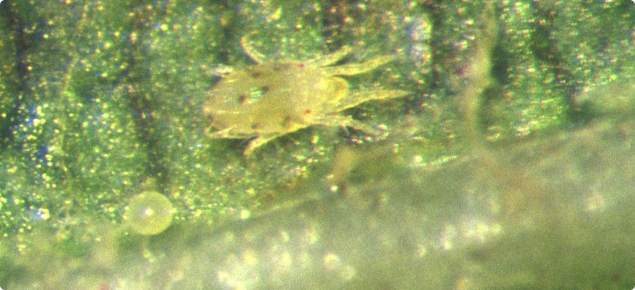Origin
The taxonomy of this mite is currently under investigation because it may in fact be a species that is native to Queensland. Until that investigation is complete, this mite will be referred to and described as if it were the same species that occurs as pest in other countries, six-spotted mite, Eotetranychus sexmaculatus (Riley). In any case, both species are very similar in appearance and cause the same damage to plants.
Six-spotted mite is native to central America. It was first recorded in WA in 1986 on avocado seedlings from eastern Australia. In 2006 the mite caused extensive damage to grapevines in the southern Margaret River region and from 2014, in avocado orchards as well as grapevines near Pemberton.
In the same year the mite was first recorded in WA, and presumably from the same source, the mite was recorded for the first time on avocados in New South Wales, Queensland and South Australia. It also occurs in New Zealand where it is also important in avocado orchards. It is also present in parts of Asia, the Middle East and USA.
Damage
The mite feeds primarily on the lower surface of leaves, concentrating its activity at least during the early stages of an infestation, adjacent to leaf veins. This feeding is characterised by discolouration of leaf tissue initially adjacent to the main leaf veins and spreads to the leaf blade as the infestation continues. Feeding by the mite results in loss of photosynthetic activity, leaf death and premature defoliation.
Signs of feeding on white and red grape varieties are yellow or red shadows respectively, on either side of the veins and visible from both sides of leaves.
On avocado, six-spotted mite feeding appears as brown to purple discolouration next to leaf veins on the underleaf surface. This is relected on the same part of the leaf on the upper surface as yellow and brown discolouration.
In citrus, primarily grapefruit but also oranges, feeding on the leaf stems and occasionally the fruit stems will cause the fruit to yellow and fall. Six-spotted mite has not been recorded on citrus in WA.
Kiwifruit is also reported as a host for six-spotted mite, but this has not been observed in WA.
In winegrapes, heavy infestations result in severe defoliationd. This exposes fruit and the quality of the grape juice can be adversely affected - through sunburn or the inability of the vine to mature fruit such as in later maturing red varieties.
Avocado orchards are particularly susceptible to the mite and low numbers can defoliate trees, exposing fruit to sunburn and redering it unmarketable.
Awareness of whether the mite is present is the first step in minimising its potential for damage.

